
How to Use AEM10941 mini Evaluation Board: Examples, Pinouts, and Specs
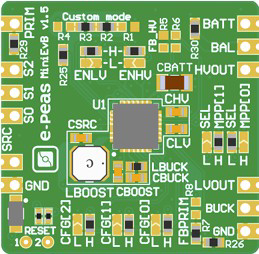
 Design with AEM10941 mini Evaluation Board in Cirkit Designer
Design with AEM10941 mini Evaluation Board in Cirkit DesignerIntroduction
The AEM10941 mini Evaluation Board is a compact and versatile platform designed to evaluate the performance of the AEM10941M energy harvesting IC, manufactured by e-peas. This board enables users to efficiently convert energy from ambient sources, such as solar panels or thermoelectric generators, into usable power for low-power electronic applications. It is ideal for prototyping and testing energy harvesting solutions in IoT devices, wireless sensors, and other battery-independent systems.
Explore Projects Built with AEM10941 mini Evaluation Board
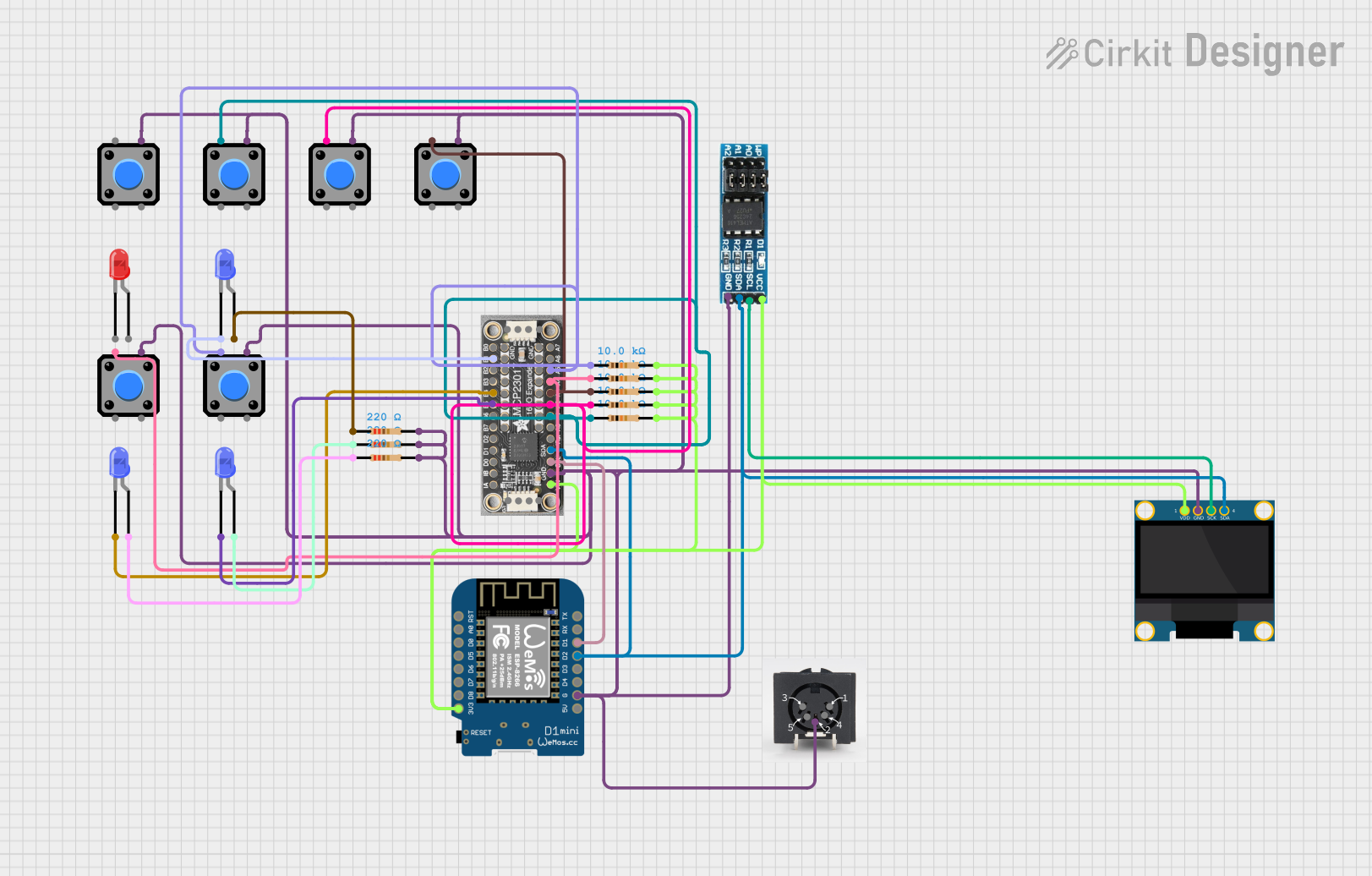
 Open Project in Cirkit Designer
Open Project in Cirkit Designer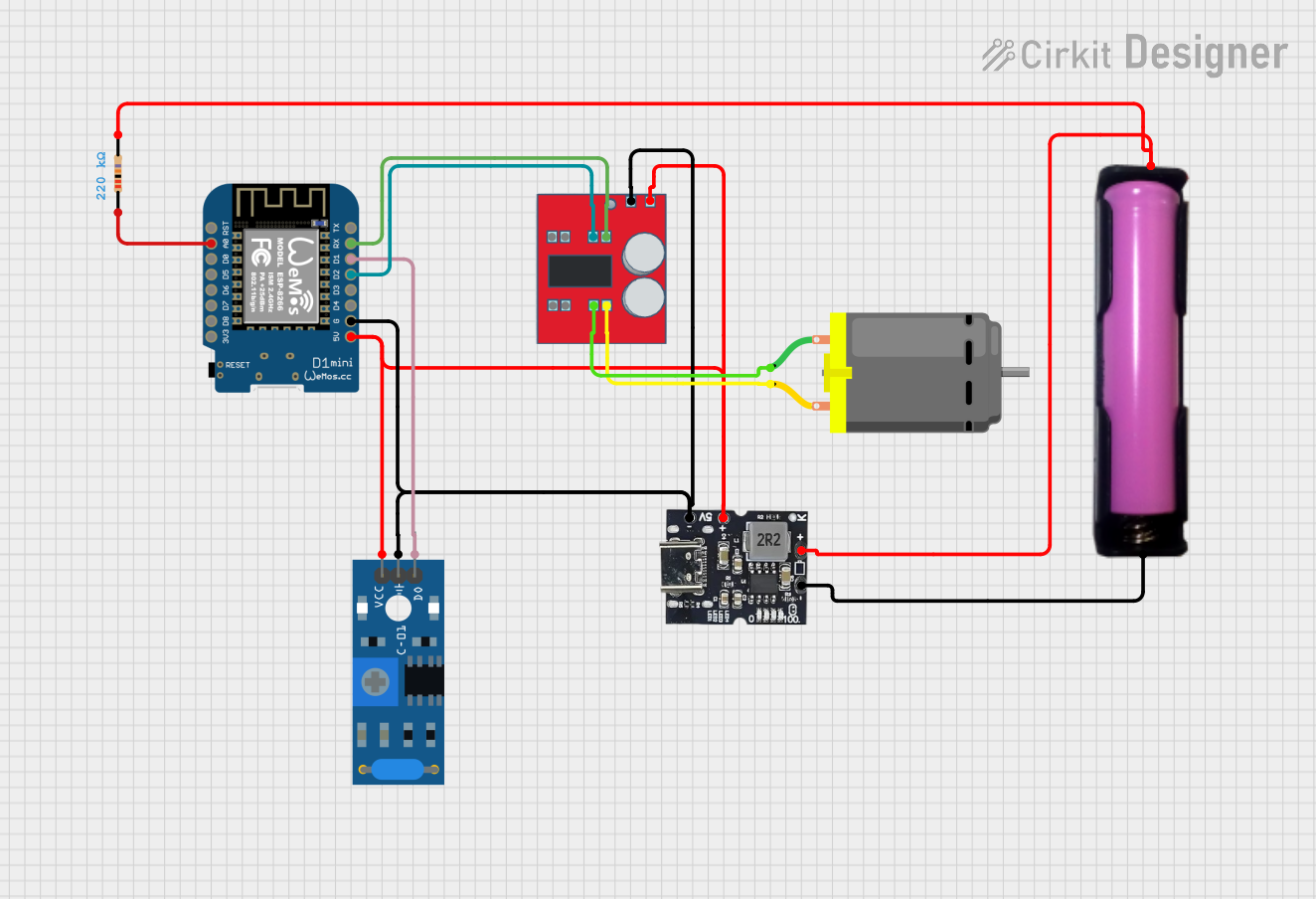
 Open Project in Cirkit Designer
Open Project in Cirkit Designer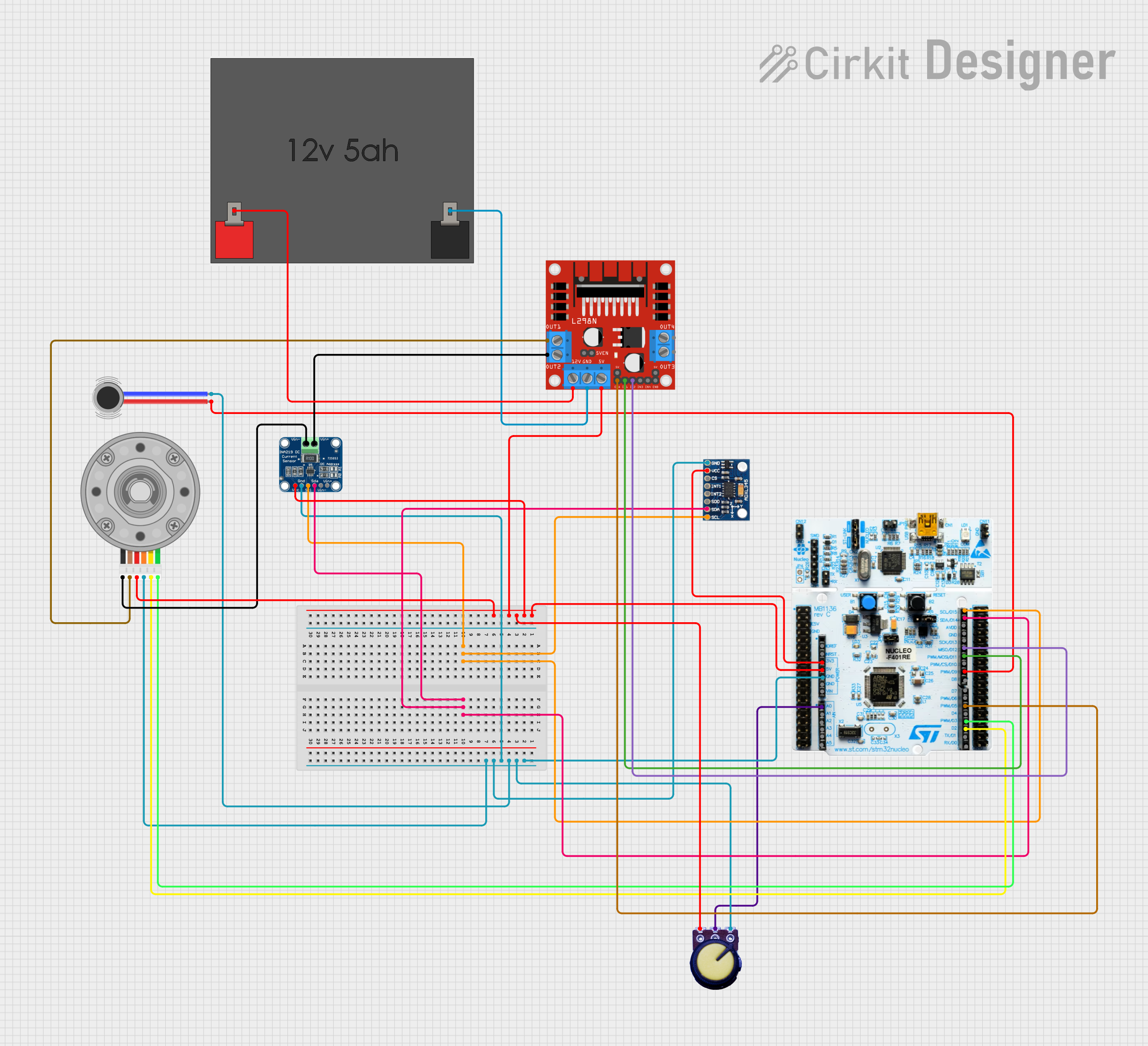
 Open Project in Cirkit Designer
Open Project in Cirkit Designer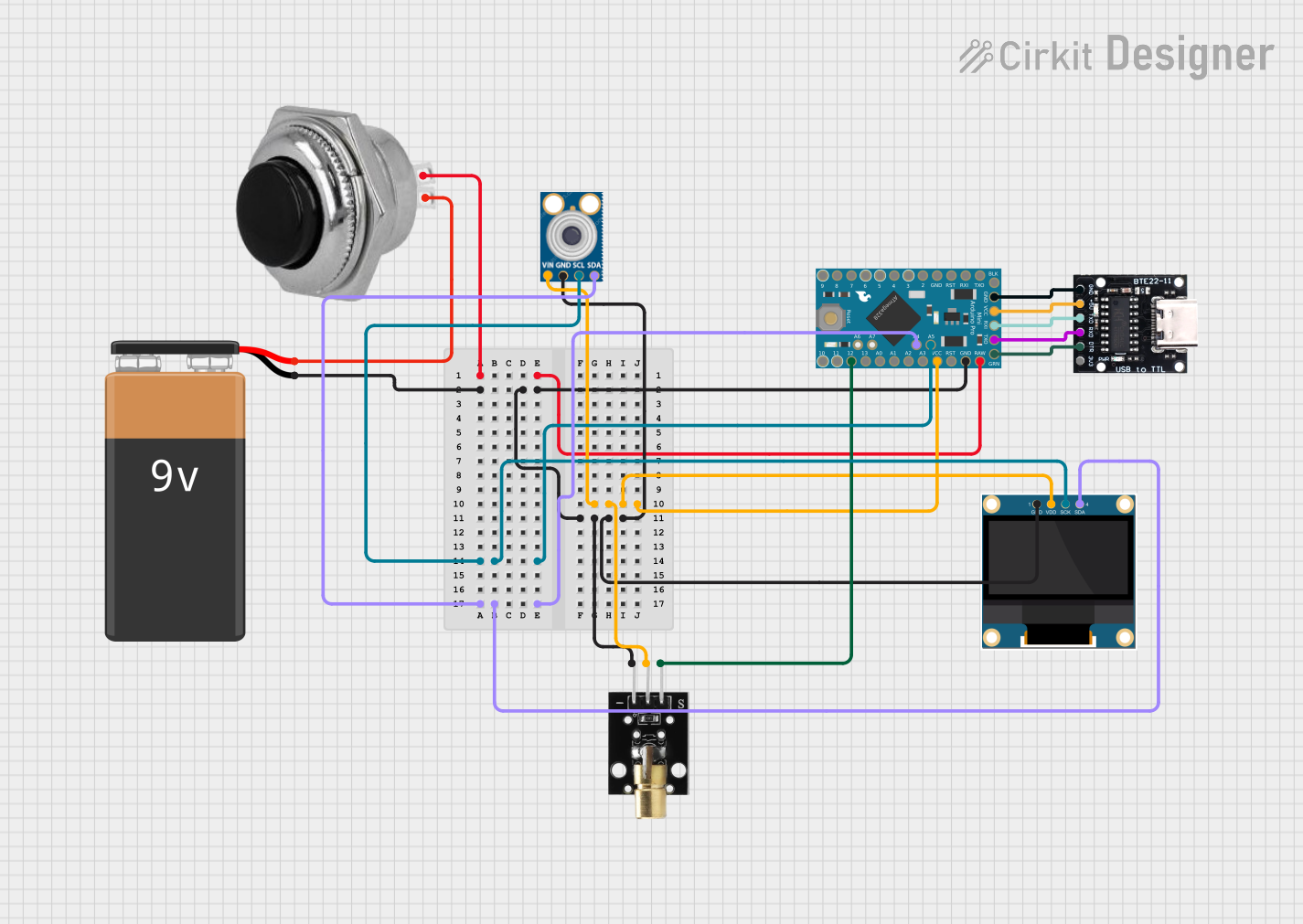
 Open Project in Cirkit Designer
Open Project in Cirkit DesignerExplore Projects Built with AEM10941 mini Evaluation Board

 Open Project in Cirkit Designer
Open Project in Cirkit Designer
 Open Project in Cirkit Designer
Open Project in Cirkit Designer
 Open Project in Cirkit Designer
Open Project in Cirkit Designer
 Open Project in Cirkit Designer
Open Project in Cirkit DesignerCommon Applications and Use Cases
- IoT devices powered by solar or thermal energy
- Wireless sensor networks
- Wearable electronics
- Remote monitoring systems
- Battery-free or battery-assisted devices
Technical Specifications
Key Technical Details
- Input Voltage Range: 50 mV to 5 V
- Output Voltage (Primary): Configurable to 1.8 V, 2.5 V, 3.3 V, or 4.1 V
- Output Voltage (Secondary): Fixed at 1.8 V
- Cold Start Voltage: 380 mV (minimum input voltage required to start operation)
- Quiescent Current: Ultra-low, enabling efficient energy harvesting
- Energy Storage: Supports supercapacitors or rechargeable batteries
- Maximum Power Point Tracking (MPPT): Configurable for optimal energy harvesting
- Dimensions: Compact form factor for easy integration
Pin Configuration and Descriptions
The AEM10941 mini Evaluation Board features several key pins and connectors for input, output, and configuration. Below is a detailed description:
Input and Output Pins
| Pin Name | Type | Description |
|---|---|---|
| VIN | Input | Connects to the energy source (e.g., solar panel or thermoelectric generator). |
| GND | Ground | Common ground for the circuit. |
| VOUT1 | Output | Primary output voltage (configurable to 1.8 V, 2.5 V, 3.3 V, or 4.1 V). |
| VOUT2 | Output | Secondary output voltage (fixed at 1.8 V). |
Configuration Pins
| Pin Name | Type | Description |
|---|---|---|
| MPPT | Input | Configures the Maximum Power Point Tracking (MPPT) ratio for optimal efficiency. |
| CFG | Input | Used to set the primary output voltage (VOUT1). |
Energy Storage Pins
| Pin Name | Type | Description |
|---|---|---|
| VBAT | Input/Output | Connects to the energy storage element (e.g., supercapacitor or battery). |
Usage Instructions
How to Use the Component in a Circuit
- Connect the Energy Source: Attach a solar panel, thermoelectric generator, or other energy source to the VIN and GND pins.
- Configure MPPT: Set the MPPT ratio using the MPPT pin to match the characteristics of your energy source. For example:
- Use a resistor divider or external circuit to set the desired MPPT voltage.
- Select Output Voltage: Configure the primary output voltage (VOUT1) using the CFG pin. Refer to the datasheet for specific resistor values or jumper settings.
- Connect Energy Storage: Attach a supercapacitor or rechargeable battery to the VBAT pin to store harvested energy.
- Connect the Load: Attach your low-power device to the VOUT1 and/or VOUT2 pins.
Important Considerations and Best Practices
- Ensure the input voltage is within the specified range (50 mV to 5 V) for proper operation.
- Use a high-quality energy storage element to maximize efficiency and reliability.
- When configuring MPPT, match the ratio to the energy source's maximum power point for optimal performance.
- Avoid exceeding the maximum output current of the board to prevent damage.
Example: Using the AEM10941 with an Arduino UNO
The AEM10941 mini Evaluation Board can be used to power an Arduino UNO in low-power applications. Below is an example of how to connect and use the board:
Circuit Connection
- Connect a small solar panel to the VIN and GND pins.
- Attach a supercapacitor to the VBAT pin for energy storage.
- Set the CFG pin to output 3.3 V on VOUT1.
- Connect the VOUT1 pin to the Arduino UNO's 3.3 V input pin.
Sample Arduino Code
// Example code to read a sensor and send data via serial
// Powered by the AEM10941 mini Evaluation Board
void setup() {
Serial.begin(9600); // Initialize serial communication at 9600 baud
pinMode(A0, INPUT); // Set A0 as input for sensor reading
}
void loop() {
int sensorValue = analogRead(A0); // Read the sensor value from pin A0
float voltage = sensorValue * (3.3 / 1023.0); // Convert to voltage (3.3V reference)
// Print the sensor value and voltage to the serial monitor
Serial.print("Sensor Value: ");
Serial.print(sensorValue);
Serial.print(" | Voltage: ");
Serial.println(voltage);
delay(1000); // Wait for 1 second before the next reading
}
Troubleshooting and FAQs
Common Issues and Solutions
The board does not start harvesting energy.
- Ensure the input voltage is at least 380 mV for cold start.
- Verify the energy source is properly connected to the VIN and GND pins.
Output voltage is incorrect or unstable.
- Check the configuration of the CFG pin to ensure the correct output voltage is set.
- Verify the energy storage element is properly connected and functioning.
The load is not receiving power.
- Ensure the load's power requirements do not exceed the board's output capabilities.
- Check all connections for proper contact and secure attachment.
MPPT is not functioning as expected.
- Verify the MPPT ratio is correctly configured for the energy source.
- Consult the datasheet for recommended MPPT settings for specific sources.
Tips for Troubleshooting
- Use a multimeter to measure input and output voltages at various points in the circuit.
- Refer to the AEM10941M datasheet for detailed configuration and performance guidelines.
- If issues persist, contact e-peas technical support for assistance.